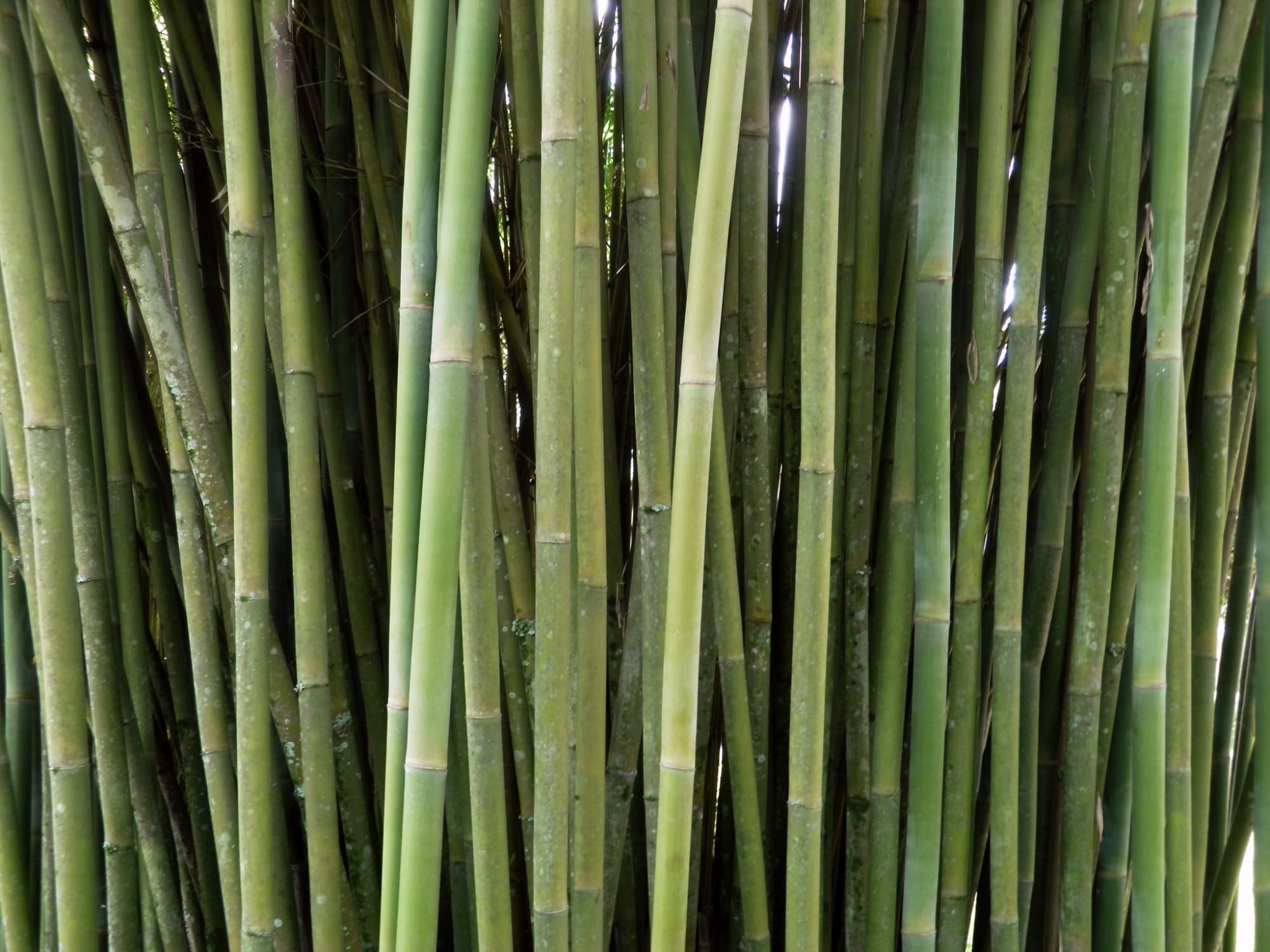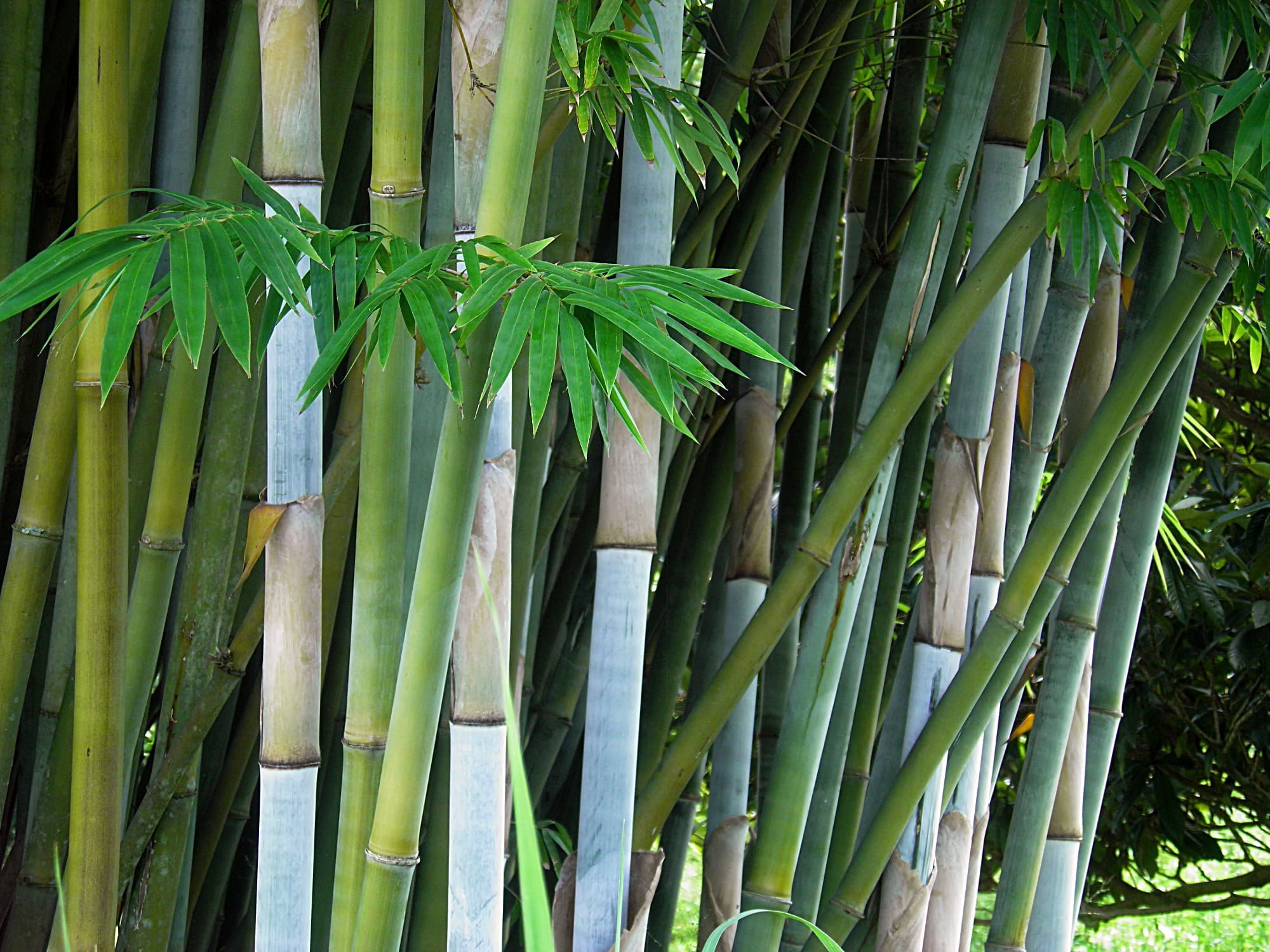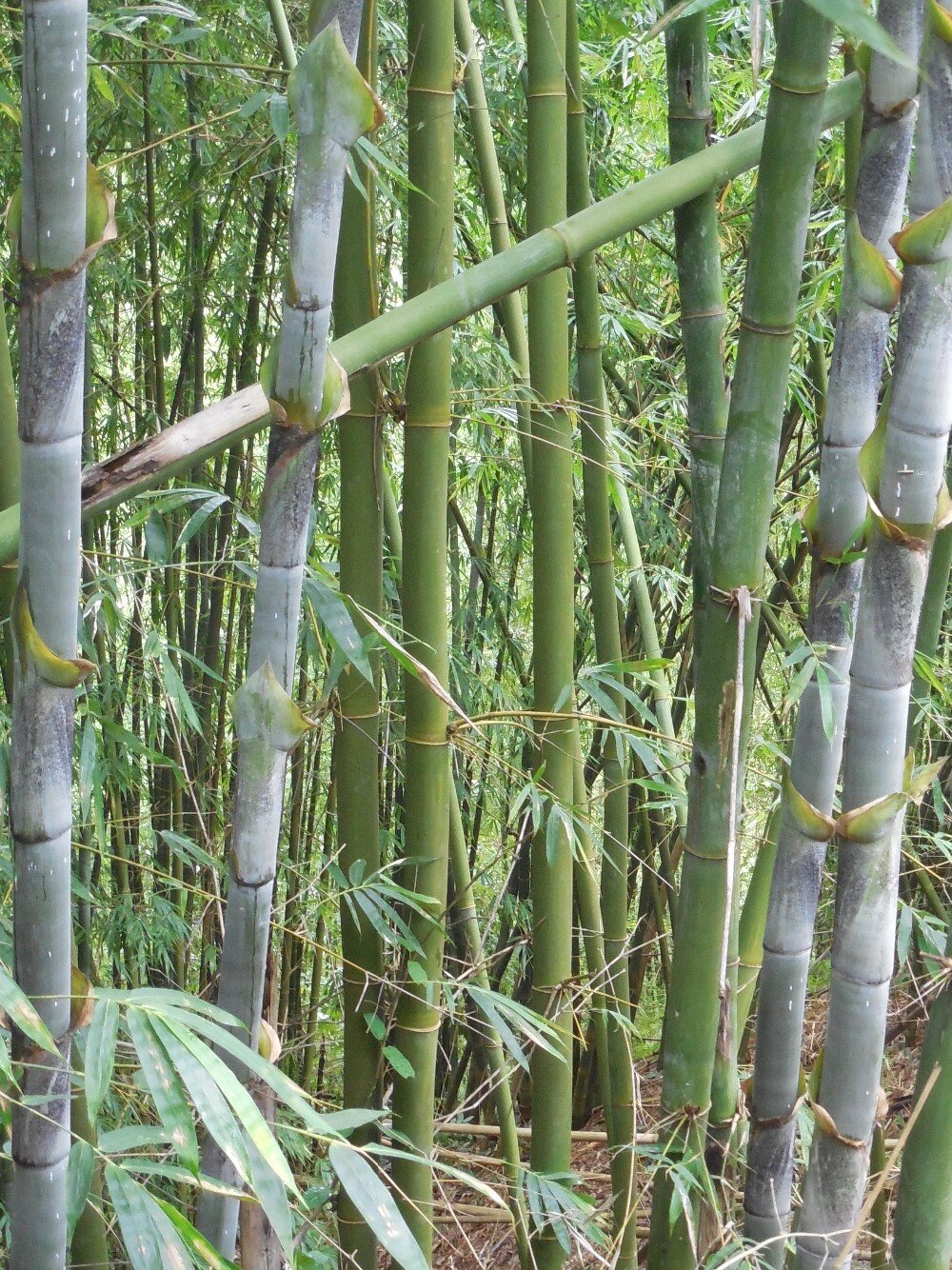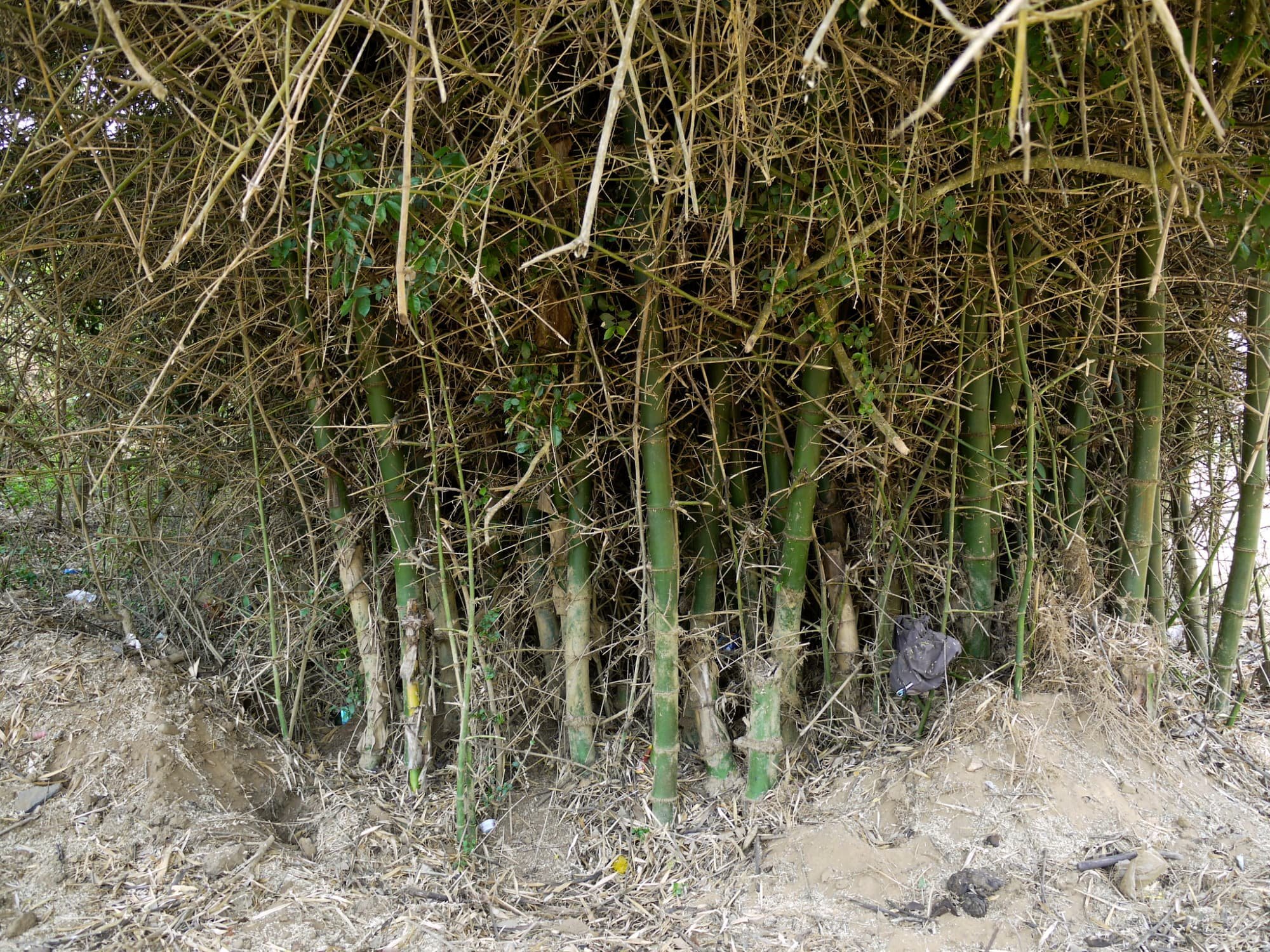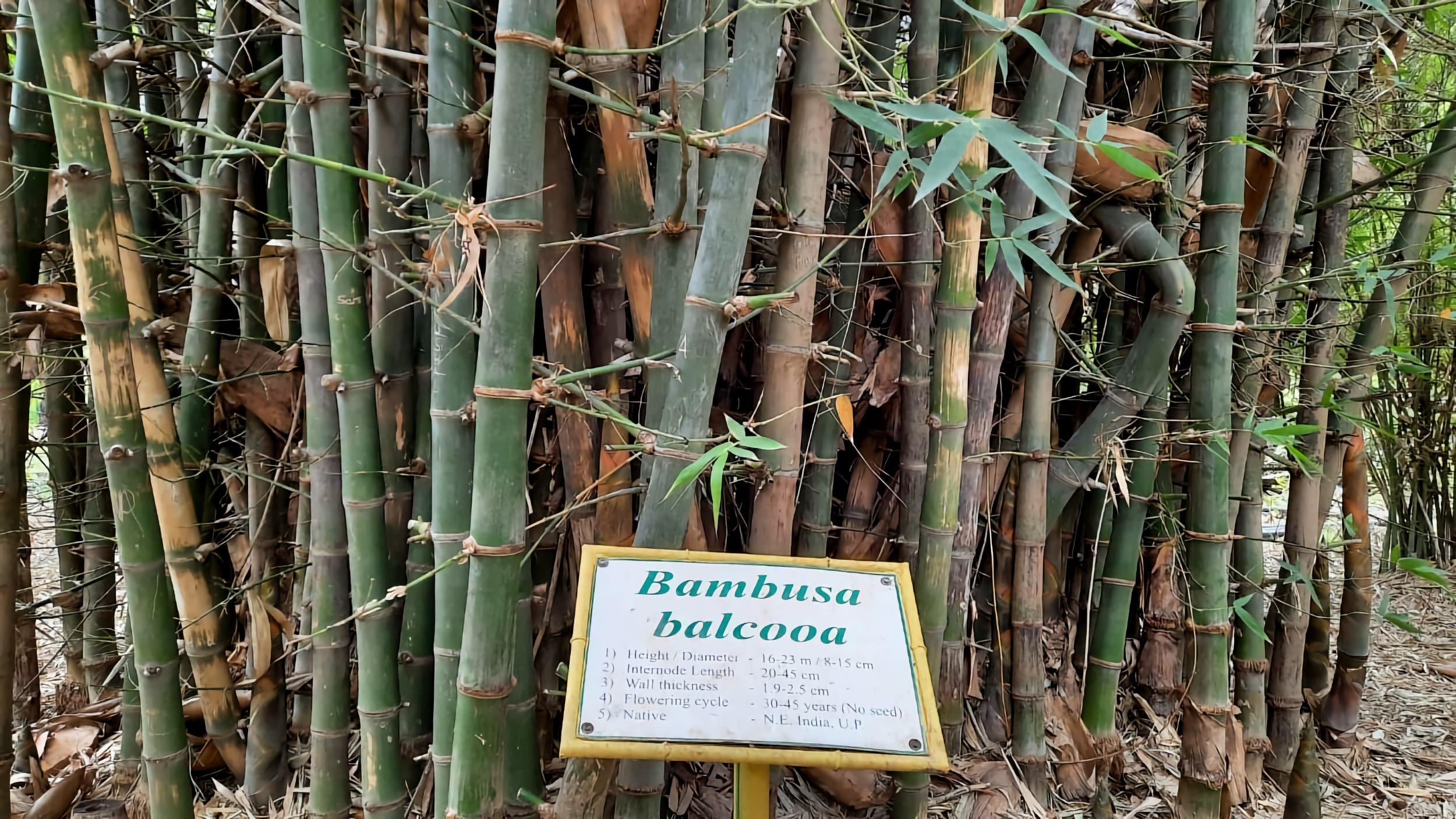Neololeba atra
Neololeba atra (formerly Bamusa atra) also known as Long Pipe Bamboo or New Guinea Thin-walled Bamboo is a tropical clumping bamboo originating from Papua New Guinea and Indonesia. This bamboo species is often used for basket making and other handicrafts.
Summary
| Height | 5 - 8 m |
| Diameter | 2 - 4 cm |
| Growth Habit | Clumping |
| Climate | Tropical - Subtropical |
| Hardiness | -1°C |
| Origin | Indonesia - New Guinea |
Photos
Culms
The culms of Neololeba atra are on average 5-8 m tall and 2-4 cm in diameter near the base. Culms are green or dark-green, or yellowish with green stripes The culm internodes are on average between 40-70 cm long, separated by prominent marked ring-like sheath scars on the nodes.
Leaves
Lance-shaped leaf blades of 30 cm long and 5 cm broad, which are dull green above, and pale green beneath. Culm sheaths are up to 60 cm long and 10 cm broad.
Shoots
Young shoots are slender with flame-shaped sheath.
Habitat
Neololeba atra is a lowland species growing well on hill slopes and along river banks. This bamboo prefers wet soil and low elevations, but is also found growing on lime stone.
Flowering
It is reported that Neololeba atra flowers regularly and that culms do not die after flowering as in other bamboos, however, often without setting any fruit.
Uses
Used mostly for basketry and handicrafts, as a building material, thatching (strips of culms used as a binding material in roofings), fish traps and screens, and in general very well-suited to develop village industries.
Origin
Native to:
Bismarck Archipelago, Maluku, New Guinea, Philippines, Queensland, Sulawesi
Introduced into:
Andaman Is., Assam, Myanmar




